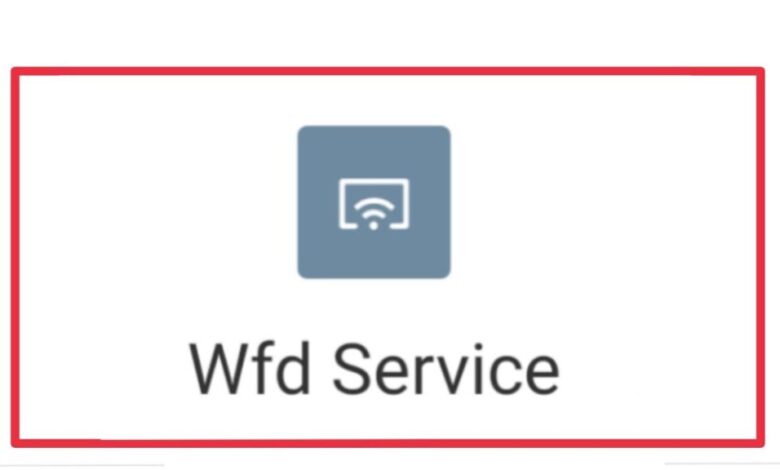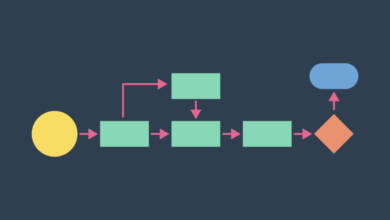What is WFD Service and How Can It Transform Your Business Workflow?

In a world where efficiency and productivity are the cornerstones of productivity, attention to business process quality has never been more important Every second counts. As businesses evolve, their systems increase in complexity, often leading to unwanted delays, errors and inefficiencies that can hinder growth and profitability This fact has led organizations to seek solutions a it can enhance their operational agility and not only keep up with their business requirements to ensure that so they are following a process of innovation and excellence .
A growing importance for business process quality
In today’s fast-paced business environment, the ability to streamline operations can have a significant impact on a company’s bottom line. Quality business processes meet this need head-on, offering people a structured approach to how tasks are run, information is managed and teams collaborate by cutting out redundancy, automating processes able to focus on what they do best. As organizations around the world face increasing competition and the ongoing quest for efficiency, the need for performance improvement has grown from a mere benefit to a critical need.
Enter the WFD project: a game changer for today’s industry
In the midst of this situation, the WFD service appears as a beacon of hope. WFD Services stands for Workflow Design Services, representing customized solutions to address and overcome the common challenge of workflow inefficiency. It’s not just software or tools; It is a holistic approach designed to rethink, rebuild and renew the veins through which the business operates. The WFD service leverages state-of-the-art technology, data analytics and industry insights, delivering a customized approach towards streamlined operations and improved productivity
What sets the WFD service apart?
WFD is distinguished by a comprehensive understanding of complex service business models and a commitment to creating efficient and adaptable solutions Its approach is unique – rather than using a one-size-fits-all model, on needs, challenges and unique objectives of each organization Analyzes carefully This ensures that the strategies developed are not only effective in dealing with immediate issues but are also adaptable to future requirements.
Whether it’s automating simple tasks, facilitating better communication between teams, or providing actionable insights through data analytics, the WFD Service is poised to it will change the way businesses use it can dramatically reduce operating costs, improve employee satisfaction and most importantly, sharp competitive advantage.
Understanding WFD Service
Definition and Evolution
The term WFD Service stands for Workflow Design Service. It’s a concept that’s easy to understand yet has profound implications for businesses. In its simplest form, a WFD Service is a system designed to improve and manage business workflows. It does so by analyzing existing processes and finding ways to make them more efficient—often through the use of technology.
The evolution of WFD Services can be traced alongside the rise of digital transformation. In the early days, processes and workflows were often manual, paper-based, and prone to human error. As technology advanced, the move to digital workflows began to take shape. WFD Services played a crucial role in this shift, providing businesses with a structured approach to adopting emerging technologies and adapting them to existing organizational processes.
How WFD Service Works
Understanding WFD Service is like getting to know the conductor of an orchestra—a maestro who harmonizes different instruments to create a symphony of efficiency. Here’s how it achieves this:
- Process Analysis: It begins by examining each step within a workflow to identify bottlenecks or redundant tasks.
- Design & Mapping: After analysis, it designs a new workflow or improves the existing one. This might include mapping out the flow of tasks from initiation to completion.
- Implementation: The new or improved workflow is then put into action, integrating it into the daily operations of the business.
The Importance of Workflow Optimization
The Impact of Enhanced Workflows: Supported By Statistics
To illustrate the influence workflow optimization can have on a business, one need not look further than raw data and research. According to a study from the Aberdeen Group, companies that implement workflow automation see a 15% increase in their business process efficiency. More fascinatingly, McKinsey reports that several industries have witnessed productivity skyrocket by as much as 20-25% due to the integration of digital technologies, particularly workflow optimization tools like WFD Service.
These statistics underline the solid impact a well-oiled workflow can have on operational efficiency, and consequently, on organization growth and profitability.
Tackling Workflow Challenges To Boost Efficiency and Productivity
Despite the compelling benefits of enhanced workflows, many businesses grapple with workflow-specific challenges every day. Some of the common hurdles include:
- Process Inefficiencies: These are workflows that involve unnecessary steps, redundancies, or manual tasks that can be automated. Such inefficiencies can lead to time wastage, increased errors, and decreased productivity.
- Lack of Visibility: Without clear visibility into the workflow, it’s difficult for businesses to identify bottlenecks, assess performance, or make informed decisions about process improvement.
- Communication Barriers: In a poorly designed workflow, crucial information can get lost in transit, leading to misunderstandings, reworks, and delays.
Addressing these workflow challenges can have a direct impact on a company’s efficiency. A business with streamlined workflows is like a finely tuned engine. With all its parts moving in harmony, it can reach its destination – the goals set by the company – quicker and with less wasted energy.
A tool like WFD Service comes into play here. It offers a precise set of solutions that can be tailored to each organization’s unique needs, bringing high automation and transparency levels. In doing so, the service eliminates inefficiencies, breaks down communication barriers, and delivers rich insights that businesses can leverage to drive continual improvement.
How the WFD implementation can transform the performance of your business
automation and efficiency
The ability to automate tasks forms the basis of workflow design (WFD) applications. This functionality eliminates the need for manual intervention in repetitive tasks, greatly reduces the chances of human error, and saves significant time A simple, everyday example might look like the sales invoicing process will be automated – transforming it from a tedious, time-consuming task to a fast , efficient and error-free one
But WFD Service goes beyond just automation. It marries technology with AI and machine learning capabilities, enabling the system to learn from existing workflows and optimizing for future systems for example, predicting high workloads based on past data and allocates resources appropriately― essentially ensuring that resources are used efficiently and that the system runs smoothly
Data-Driven Insights
In today’s digital age, data is not just information; It’s a tool that can provide valuable insights for increasing productivity and productivity. A WFD service comes equipped with powerful analytics and reporting tools that crunch raw data into actionable insights. This can range from identifying challenges in your workflow to determining when productivity peaks.
Companies can use this insight to make informed decisions. For example, an eCommerce business can maintain efficiency by ensuring that its order fulfillment slows down at certain times of the day and reschedules operations or adds products at that time That decision this, driven by data provided by the WFD application, typically results in increased operational efficiency and ultimately improved bottom line information.
Real-World Applications and Success Stories
The implementation of Workflow Design (WFD) Services has revolutionized the way businesses operate, evidencing tangible benefits and outcomes. By exploring specific examples and case studies, we can observe the transformative power of WFD Services in action.
Case Study #1: Retail Giant
A leading retail company faced challenges in managing its inventory efficiently across multiple locations. After implementing WFD Service, they achieved:
- Reduction in Inventory Costs: A 20% decrease in emergency replenishments due to better workflow optimizations.
- Improved Order Fulfillment: A 15% increase in on-time deliveries to customers, enhancing customer satisfaction and loyalty.
By automating the inventory management process and integrating predictive analytics, the WFD Service provided the retail giant with timely insights, enabling proactive decision-making and significantly reducing stockouts and overstock situations.
Case Study #2: Healthcare Provider
A healthcare provider dealing with patient records and appointment scheduling implemented WFD Service to improve its operations:
- Increased Patient Satisfaction: Automated scheduling and reminders led to a 30% decrease in patient wait times.
- Enhanced Data Security: By automating data entry and records management, they reduced human errors, ensuring a 99.9% accuracy rate in patient records.
This example showcases the importance of workflow optimization in handling sensitive information and improving overall service delivery in healthcare settings.
Case Study #3: Manufacturing Company
A mid-size manufacturing company utilized WFD Service to streamline product development and production processes:
- Reduced Time to Market: Cut down product development cycles by 25%, enabling faster response to market demands.
- Increased Production Efficiency: A 20% improvement in production workflow efficiency, leading to higher output and lower operational costs.
The application of WFD Service allowed for seamless integration of design, prototyping, and production workflows, ensuring that each phase was optimally planned and executed.
Choosing the Right WFD Service for Your Business
Selecting a Workflow Design (WFD) Service is a pivotal decision for business operations. Here’s how to ensure you choose the right one.
Key Considerations for Selection
Compatibility
- Ensure the WFD Service fits with your current systems.
- Look for services offering easy integration with your technology stack.
Scalability
- Choose a service that grows with your business.
- The service must handle an increase in workload without hitches.
Support
- Opt for providers with reliable customer support.
- Check if they offer training and resources for your team.
Assessing Business Needs Against Service Offerings
Evaluate Your Workflow Requirements
List down your main workflow challenges. Compare these with the features offered by the WFD Service. Your chosen service should address your specific pain points.
Examine Service Flexibility
- Consider the adaptability of the service.
- It should accommodate future changes in your business processes.
Inspect Data and Reporting Capabilities
- The service must offer insights into workflow performance.
- Ensure it provides the data necessary for informed decision making.
Cost-Benefit Analysis
- Calculate the potential return on investment.
- Consider both upfront costs and long-term value generation of the service.
To use the WFD functionality in your application
Implementing a workflow design (WFD) service in your operations can seem daunting. Breaking it down into manageable steps simplifies the process.
Step 1: Identify your business challenges
Understand the limitations of the current business model. What slows down the process? Where are the bottles?
Step 2: Select the appropriate WFD implementation
Choose a WFD implementation based on your challenges. Make sure it’s scalable, compatible with your systems, and provides strong customer support.
Step 3: Define your business plan
Describe your performance in the WFD process. This includes tasks, responsible employees, and task sequences.
Step 4: Use the service
Use the service in your activities. Ensure all relevant personnel are trained to use it.
Step 5: Check and Optimize
Check performance regularly. Use data to change your business processes and continually improve them.
Following these steps will ensure successful access to the WFD service.
conclusion
In this guide, we highlighted how the WFD implementation can transform business operations. By automating and streamlining tasks, companies can dramatically improve efficiency and increase productivity.
As business trends evolve, WFD projects can continue to grow. These projects not only streamline current activities but also provide a framework for future improvements. With features like scalability and customizability, businesses can be confident that as they grow and change, their WFD service will change alongside them.
As we look to the future of business process quality, WFD projects stand out as a key factor. With their ability to optimize operations, deliver data-driven insights, and improve performance, they are poised to continue to transform industries. Investing in WFD services is an investment in the future success of your business.






